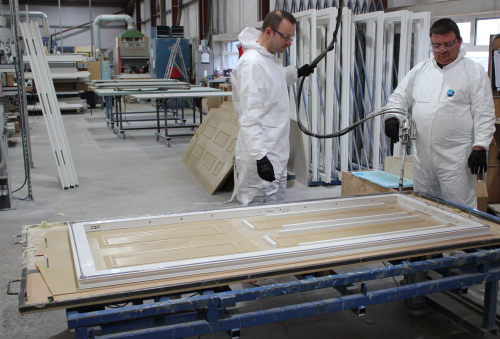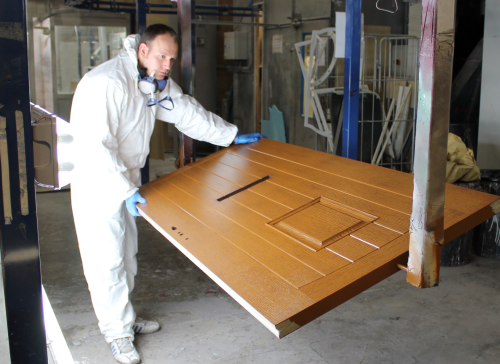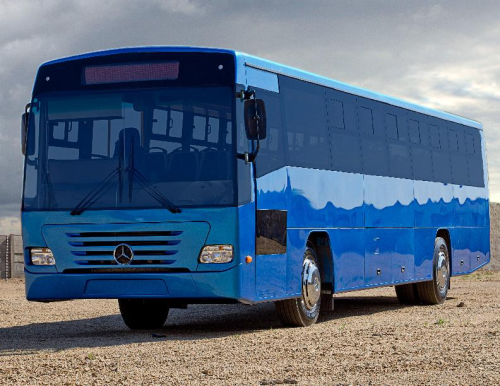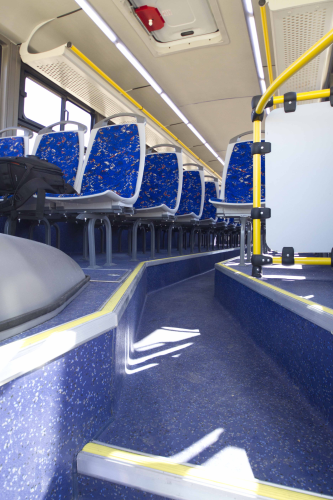



The use of high performance structural adhesives to bond fibre reinforced composites and other materials together in preference to over-laminating and mechanical fastening is continuing to grow. This is due to the fact that structural adhesives provide a highly desirable combination of improved mechanical performance and weight reduction with tangible production cost saving benefits.
Building on its reputation and expertise in bonding fibreglass, gained from the long established Crystic® Crestomer® structural adhesives range, Scott Bader developed and launched (at the COMPOSITES EUROPE 2010 show) Crystic Crestabond®, a new range of primer-less methyl methacrylate (MMA) based 10:1 structural adhesives.
This was in response to the growing demand for better, faster performing universal structural adhesives capable of bonding not only composites together, but also commonly used metal and plastic substrates such as aluminium, stainless steel, ABS, acrylic and PC.
Performance and cost benefits
The ability of the right type of structural adhesive to produce a fabricated part with superior mechanical performance – such as improved flexural strength, better creep properties and higher impact resistance – and significantly reduced weight are compelling enough reasons for a manufacturing company to economically justify making design changes and rethinking production methods to realise these benefits.
The addition of major productivity gains and overall lower production costs convinced a number of forward thinking companies to invest time and engineering resources to trial Crystic Crestabond and discover what benefits and savings they could achieve.
Faster door production
New World Ltd, based in Ballymena, Northern Ireland, is a leading manufacturer of exterior and interior unplasticised polyvinyl chloride (UPVC) and glass reinforced plastic (GRP) composite domestic doors. It has an established customer base in the UK and Ireland, which is currently expanding with growing export sales in Europe and the USA.
In this highly competitive sector of the building market, New World needs to be extremely cost and productivity focused, but with no compromise on build quality.
With this in mind, after successful shop floor production trials, Crestabond M1-05 was specified for the key inner sash frame and door skin structural bonding applications. Since mid-2011, Crestabond M1-05 has been phased in and is now used on 85% of the New World range of doors. This includes being used for the company’s new all-GRP Apeer 70 and 44 doors, constructed with a bonded inner sash made from a pultruded GRP profile which replaced UPVC. The advantage of having the entire door designed with the same material is the elimination of any distortion once installed.
| With Crestabond M1-05, due to its significantly faster fixture time, we have made significant productivity gains in our door production. |
| Asa McGillian, managing director, New World |
Switching to Crestabond M1-05 to bond together the cut-to-size GRP or UPVC profiles used to make the rectangular inner sash frame of the door designs has had a major impact on increasing New World’s overall production line productivity and build quality, as well as reducing scrap levels.
Asa McGillian, managing director of New World explains: “With Crestabond M1-05, due to its significantly faster fixture time, we have made significant productivity gains in our door production. The overall cost benefit analysis is commercially very attractive for the business relative to the price of Crestabond.”
For the pultruded GRP inner sash frames, New World now has a 25% faster cycle time in the bond and assembly stage, down from 16 to only 12 minutes. Productivity gains were even better for the UPVC inner sash production line, where the cycle time reduced by 73% since switching to Crestabond M1-05 with its 12 minute fixture time. It replaced a two-part polyurethane (PU) adhesive which needed 45 minutes before the assembled frame could be moved to the next production stage.
McGillian went on to say: “Product quality has definitely improved, particularly during colder periods, as Crestabond has proved to be a tougher, more reliable and consistent adhesive, which gives us fewer breakages and scrap loss compared with other MMA and polyurethane adhesives previously used.”
To help with productivity, New World uses automated 10:1 dispensing machines from the UK equipment manufacturer Liquid Control Ltd in combination with 20 litre pails of Crestabond M1-05. However, for certain bonding applications, such as a 4 mm profile, using a hand-held pneumatic gun with 400 ml cartridges of Crestabond has proved faster to use, with much better application control of small beads of adhesive, so is less wasteful. New World has found that using cartridges is overall more cost effective for the smaller, more intricate bonding applications.
Better bus production
Busmark 2000, founded in 1973, has four business units with over 500 staff and is now the leading bus body builder, repairer and parts supplier in Southern Africa. The company also markets new and refurbished buses and speciality vehicles. Its OEM customer base includes HINO Trucks SA, ISUZU Trucks SA, Iveco, MAN Truck & Bus, VW, Mercedes Benz SA, UD Trucks SA, Scania, VDL Bus & Coach, and Volvo SA.
Cadcor and Busmex, the bus body manufacture, repair and refurbishment business units within the Busmark 2000 Group, mould a wide variety of GRP interior and exterior bus parts such as front and rear domes, body panels, ceiling sections, flooring, locker boxes, parcel shelving, and window frames. Scott Bader Pty has been a key raw material supplier partner to Busmark for many years. As part of a continuous improvement review with Busmark 2000 Operations and Engineering teams, Crestabond was recommended and successfully trialled for a number of fibreglass and metal bonding applications as an alternative production process to drilling and mechanically fixing parts together.
By redesigning and adjusting its assembly process to using Crestabond, Busmark was able to reduce the weight of fabricated composite components and make productivity savings of over 15% due to reduced assembly times. Overall build quality was also improved, with excellent bond strengths being achieved after only minimal surface preparation cleaning of GRP and stainless steel parts prior to bonding; an etch primer is used on mild steel parts as part of their rust prevention regime.
To suit its shop floor working environment and the need for flexibility in its production processes, Busmark opted to use Crestabond M1-20 in 400 ml cartridges, which operators can accurately apply using manual and pneumatic hand guns. The longer 16-22 minute working time of Crestabond M1-20 suited several different application requirements.
Having just the one adhesive increased overall productivity and avoided potential shop floor operator material selection errors for different applications.
Hannes Pienaar, resident engineer for Busmark 2000, who has worked closely with Scott Bader Pty on a number of quality and productivity improvement projects, commented: "Scott Bader’s product offering, reliable quality and customer support has contributed enormously to the technical advances Busmark 2000 has made in the production and repair of bus body parts. This is evident in the noticeable improvements in our product quality, production efficiency and throughput times. Scott Bader's hands-on, practical customer support and expert advice has helped Busmark 2000 to confidently implement more advanced composite manufacturing methods, such as bonding, which has contributed to our leading position in the South African bus market today.”
Adhesive trends in Europe
According to a Frost & Sullivan report published on the European structural adhesives market, unit shipments of structural adhesives in Europe are likely to reach 67 200 tonnes by 2015, which is a forecast growth of over 13% since 2008. Established technologies used by leading producers of structural adhesives are based on epoxy, polyurethane, urethane acrylate, acrylic and cyanoacrylate chemistries, from which a wide variety of different types of structural adhesives have been developed.
Significant continued growth in the use of structural adhesives is expected in automotive, aerospace, commercial vehicles and other transportation sectors, as well as greater usage in building and construction, wind energy, marine, electrical and consumer goods.
Major challenge
The opportunities to redesign a composite part with a structural adhesive vary within markets, their suitability for an application, and an understanding of their performance capabilities by design and production engineers.
A major challenge faced by adhesive producers and suppliers, which is claimed to have hindered a higher adoption of structural adhesives, has been a lack of confidence among some design engineers. As more adhesives are specified for demanding applications and reliable long term performance is demonstrated, confidence in the use of structural adhesives will continue to grow as a reliable engineering material and a more cost effective fabrication method. ♦
This article was published in the January/February 2012 issue of Reinforced Plastics magazine. To apply to receive your free copy of each issue of Reinforced Plastics please complete the subscription form.





